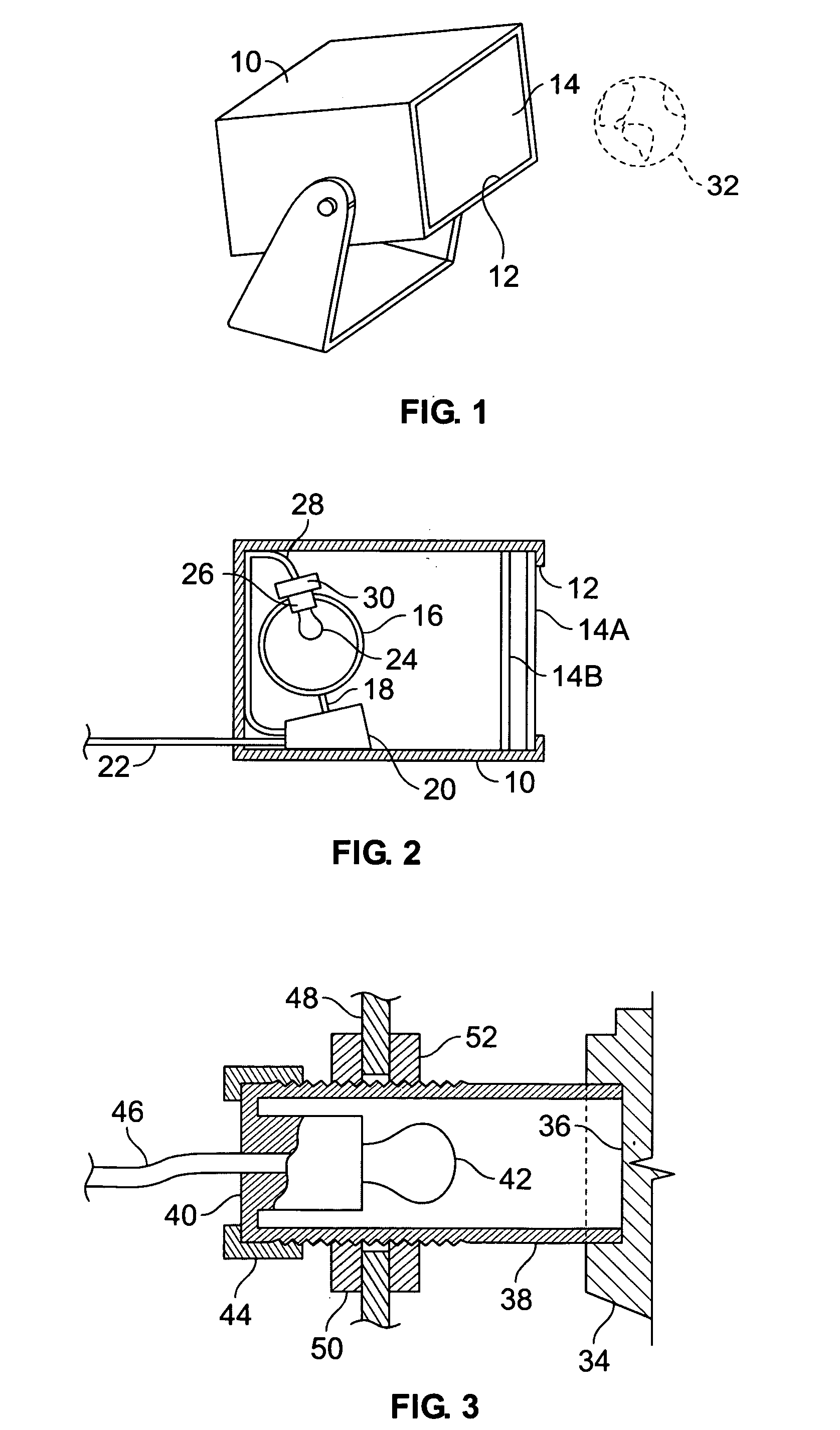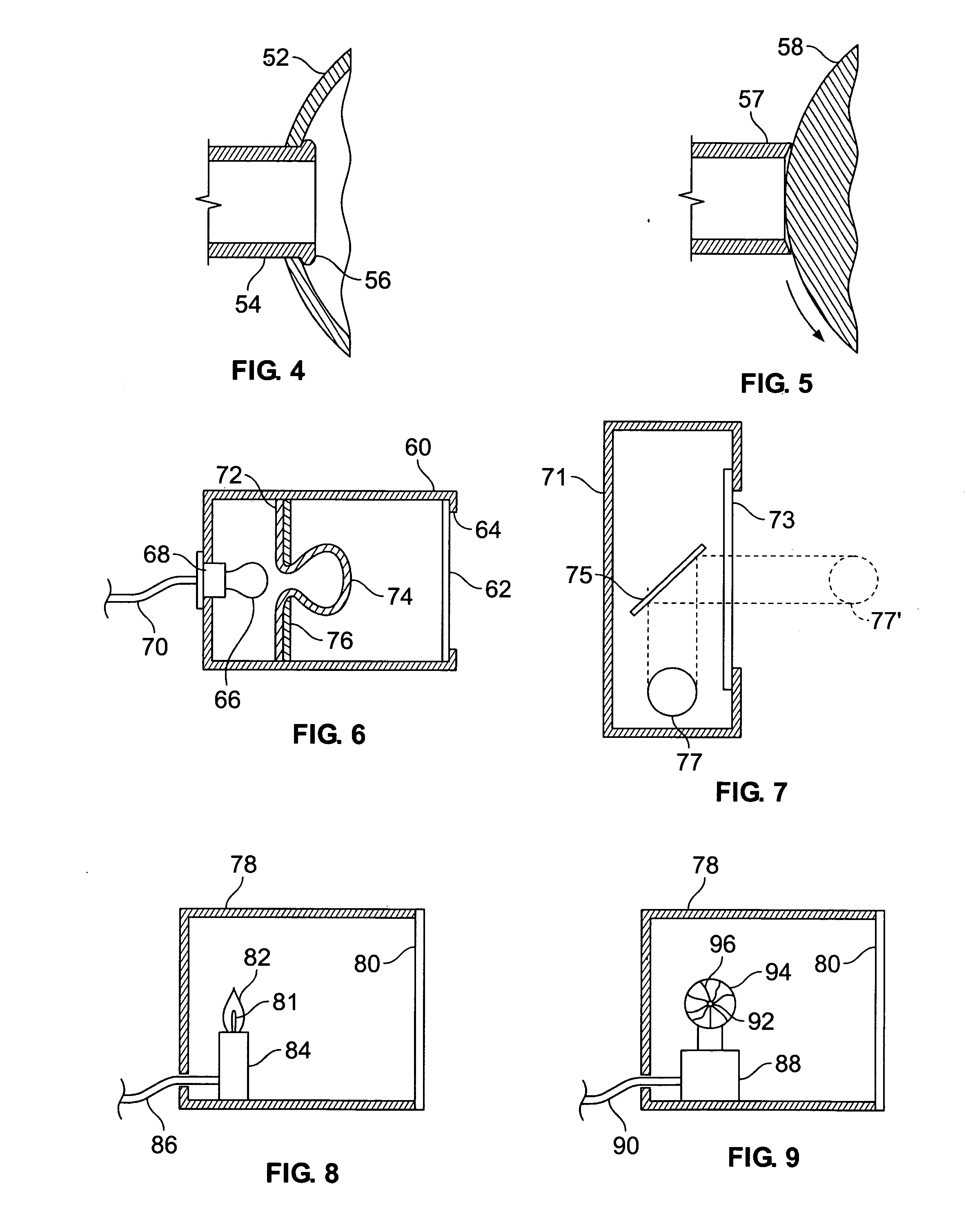Optical device for producing a virtual image
a virtual image and optical device technology, applied in the field of optical devices, can solve the problems of inability to produce ghost-like images, inability to adjust the external lighting of objects, and inability to adjust the brightness of objects,
- Summary
- Abstract
- Description
- Claims
- Application Information
AI Technical Summary
Benefits of technology
Problems solved by technology
Method used
Image
Examples
Embodiment Construction
[0035] Referring to FIGS. 1 and 2 an optical device is shown employing a box 10, which is about 18 inches (46 centimeters) long, although boxes of different sizes are contemplated, depending upon the available space, the size of the desired virtual image, etc. While a rectangular box is illustrated, other embodiments may employ boxes with shapes that are, at least in part, cylindrical, spherical, ovoid, polyhedral, etc. The inside of box 10 is coated with a light absorbing material such as a flat black paint.
[0036] The front of box 10 has a window opening 12 fitted with two Fresnel lenses 14A and 14B, although other embodiments may employ fewer or more Fresnel lenses, a traditional lens with lenticular surfaces, or other types of lenses. Lenses 14A and 14B may be attached to the back of a ridge provided on window opening 12. The focal length of lenses 14A and 14B will be selected to produce the desired virtual image to be described presently. The height, width, and spacing between ...
PUM
 Login to View More
Login to View More Abstract
Description
Claims
Application Information
 Login to View More
Login to View More - R&D
- Intellectual Property
- Life Sciences
- Materials
- Tech Scout
- Unparalleled Data Quality
- Higher Quality Content
- 60% Fewer Hallucinations
Browse by: Latest US Patents, China's latest patents, Technical Efficacy Thesaurus, Application Domain, Technology Topic, Popular Technical Reports.
© 2025 PatSnap. All rights reserved.Legal|Privacy policy|Modern Slavery Act Transparency Statement|Sitemap|About US| Contact US: help@patsnap.com



